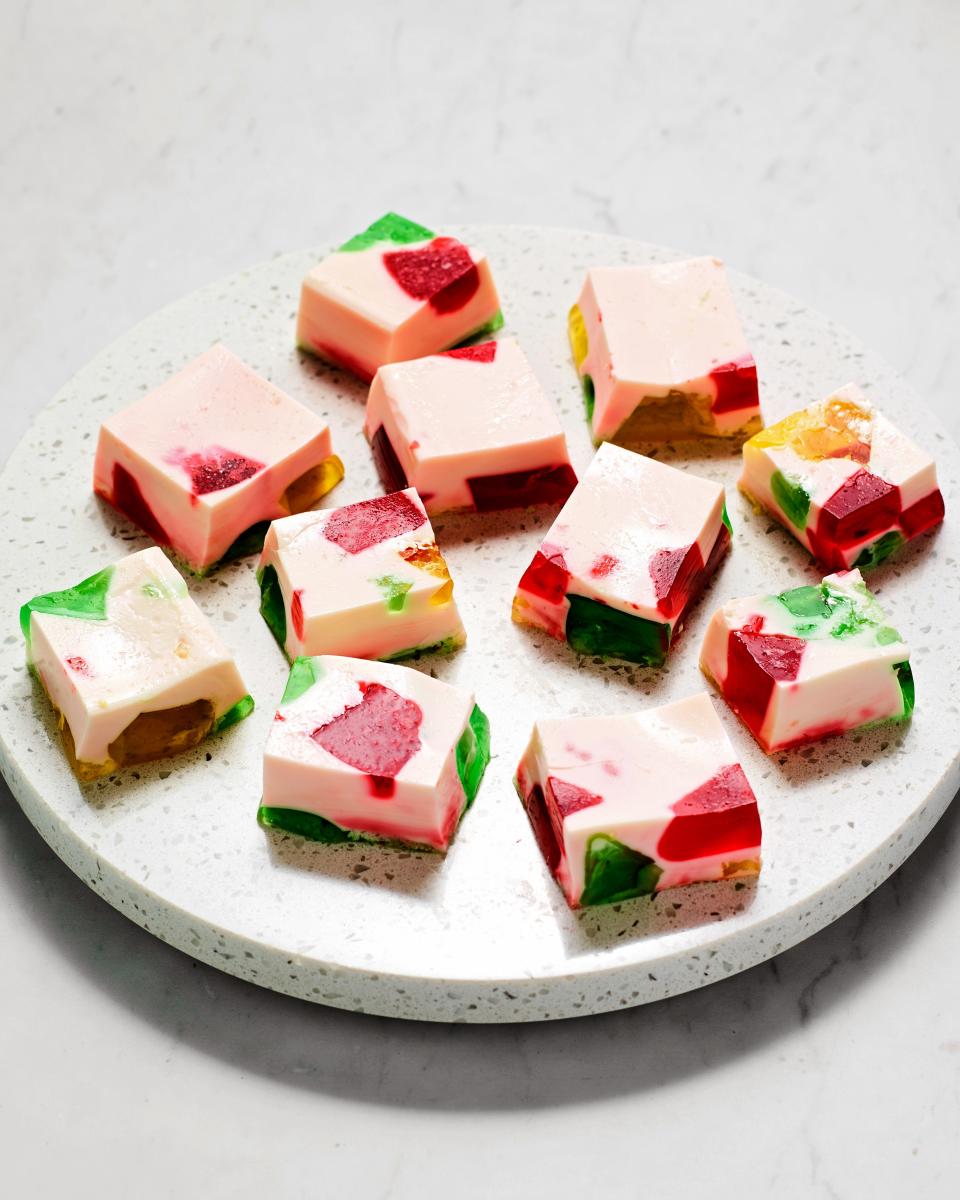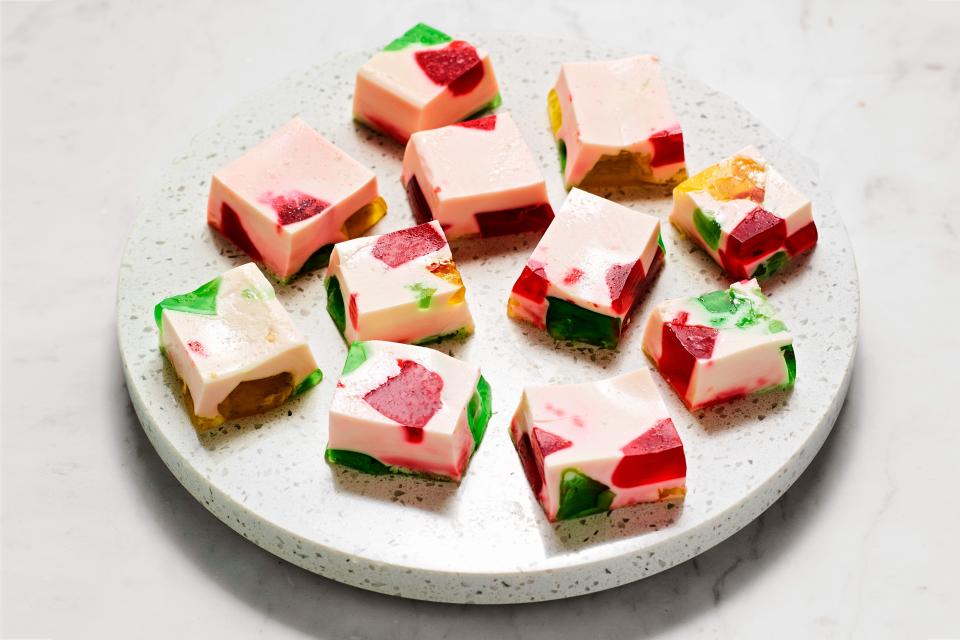Gelatina de Mosaico Looks Like Terrazzo, Tastes Like a Dream
When I started brainstorming dessert recipes for my first cookbook, Chicano Eats: Recipes from My Mexican American Kitchen, I conjured the bakery section of a Mexican grocery store, and the mercados and tianguis you find anywhere in Mexico. There, among the cakes and conchas and churros is another category of sweet offering: gelatinas. Suddenly I remembered how, growing up, whenever there was a celebration, there were gelatinas alongside the cakes on our dessert tables.
And like that, I found myself with a long list of different cake and gelatina recipes—and not enough space to include them all.
What is it about gelatinas that makes them so popular? To find out, I went to the source I trust most: my mom. She boiled it down to accessibility. Gelatinas are inexpensive to make, often requiring just a handful of ingredients that you probably already have in your pantry: unflavored gelatin, milk, sugar or condensed milk, and fresh fruit. They work well when you’re feeding a large group, because they travel well and are inexpensive to make in big batches. (The economy of gelatinas is also the reason why they’re a popular item among street vendors.)
Mom also mentioned how much gelatinas allow for creativity: You can create vibrant layers of color and flavor (like the Duvalin Jello in my book, inspired by a Mexican candy with its vanilla, hazelnut, and strawberry layers), and, if you like, you can work in fresh fruit. One of the gelatinas that my mom would make for my siblings and me every summer featured two distinct layers. First, she poured a creamy milk jello layer. On top of that, she’d add a layer of fresh, ripe peach slices. Finally, she’d pour in a peach-flavored gelatin, being careful so as to not disturb the fruit. It was a match made in heaven, the juicy peaches contrasting with the richness of the milk jello.

Cool Jello Blocks - INSET - IG - v1
But the gelatina that I was most fascinated by as a kid was gelatina de mosaico. When I was in Sunday school, I’d look forward to leaving class because there would be street vendors lined outside church selling warm tamales out of a cooler, hot champurrado (a hot chocolate drink thickened with masa), gelatina de Rompope (gelatin made with Mexico’s eggnog-like drink), and gelatina de mosaico in little plastic cups. After I finished stuffing my face with a hot tamal de pollo, I’d buy a little cup filled with gelatina de mosaico. Before eating, I’d stare and marvel, wondering how the colorful cubes of gelatin were able to suspend inside the milky white base.
When I got old enough to work my way around the kitchen, I learned the secret behind this tasty magic trick—and found that it was actually quite simple. Gelatina de mosaico gets its bright colors and terrazzo look by featuring several different flavors (and thus colors) of gelatin. Start by selecting your colorful gelatins—pick any three flavors/colors you like, make individual batches of each, and then slice them into small cubes. Follow by making a creamy vanilla milk gelatin flavored with cinnamon and sweetened with condensed milk. Let the creamy milk gelatin cool completely and then pour it into a pan or mold. Scatter the colorful cubes on top—the cooled vanilla base should be viscous enough that the colorful cubes will be suspended. When you cut into it the final dessert, the cross sections will look like mosaics or shards of colorful stained glass.
Gelatina de mosaico is no longer a mystery to me, and now I make it with cherry, blue raspberry, and lemon jellos to match the colors of my logo (blame it on the art school background). But even though I know how to make it, I still sometimes find myself looking at the final product and staring in wonder.
Gelatina de Mosaico
Originally Appeared on Epicurious


